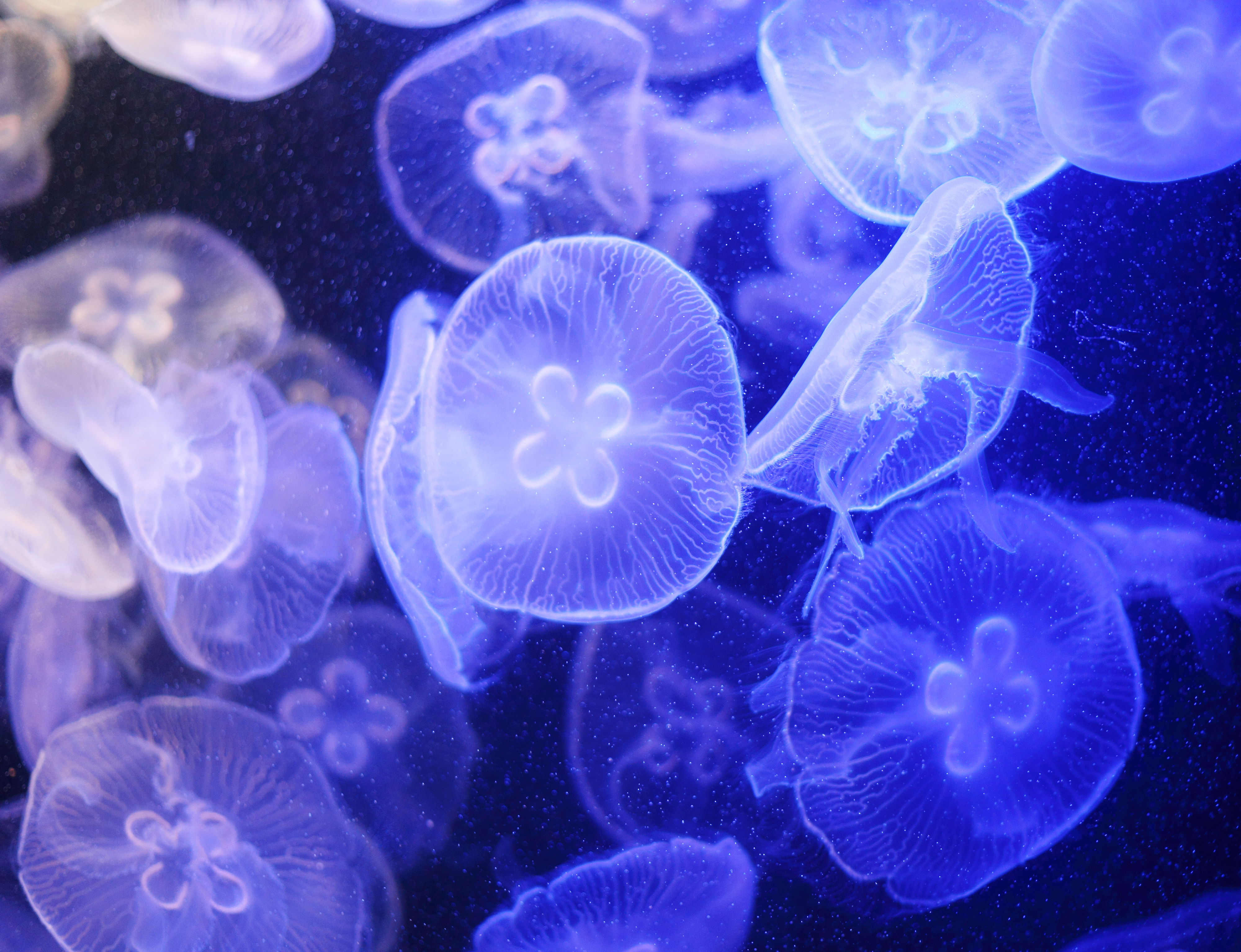Jellyfish is any of certain water animals that have jellylike material supporting their soft bodies. In biology, the terms jellyfish and medusa refer to a stage in the life cycle of these animals. Jellyfish range in size from microscopic to about 7 feet (2.1 meters) wide. Their jellylike material serves as a skeleton to support their fragile body wall and to help them float in water.

The jellyfish body looks like a bell or umbrella. A short tube, which contains the mouth, often hangs from the center of the body. The edges of this tube can form four to eight frilly projections called oral arms. Another group of projections, called tentacles, hang down from the edges of the body. Each kind of jellyfish has a certain number and length of tentacles. Some kinds possess tentacles more than 100 feet (30 meters) long.
Loading the player...Jellyfish
Biologists classify jellyfish in an animal group called cnidarians << ny DAIR ee uhns >>, which also includes corals, sea anemones, and hydras. Large jellyfish typically belong to a smaller group known as scyphozoans. Scyphozoan jellyfish, sometimes called sea nettles, often live along sea coasts. They may have white, pale orange, pink, blue, or other coloring. Many small jellyfish belong to a group called hydrozoans. A few hydrozoan jellyfish live in fresh water.
Jellyfish often produce eggs. The eggs develop into small planulae with hairlike body parts. The planulae, in turn, develop into polyps, which usually look like cylinders with tentacles. Polyps often attach themselves to hard surfaces on the sea bottom. Immature medusas grow from the polyps by a process called budding. An immature medusa, after reaching a certain size, may detach from the polyp and develop into a mature jellyfish.
Loading the player...Aurelia Aurita jellyfish
Jellyfish swim by expanding the body like an opening umbrella, then pulling it together again rapidly. This squeezes water out from beneath the body and propels the jellyfish through the water. When these movements stop, the jellyfish sinks to the ocean floor. On its way down, it catches small animals that touch its tentacles or oral arms. These parts contain stinging cells that explode when touched, driving tiny toxic (poisonous) threads into the animal and paralyzing it. The prey is then passed to the mouth of the jellyfish and swallowed. Such animals as fish and turtles eat jellyfish.
Some jellyfish can inflict painful and dangerous stings to people. Jellyfish called sea wasps or box jellyfish inject a poison deadlier than any snake venom. Some people have died within three minutes of being stung by a sea wasp. Sea wasps live in the waters of Australia and Oceania.

